GIÁ ĐÁP ỨNG SAU ĐIỀU TRỊ BẰNG PHƯƠNG PHÁP NÚT ĐỘNG MẠCH HÓA CHẤT TRÊN BỆNH NHÂN UNG THƯ BIỂU MÔ TẾ BÀO GAN TẠI BỆNH VIỆN ĐA KHOA TRUNG ƯƠNG CẦN THƠ NĂM 2024
Nội dung chính của bài viết
Tóm tắt
Mục tiêu nghiên cứu: Xác định diện tích dưới đường cong (Area Under the Curve - AUC), điểm cắt, độ nhạy, độ đặc hiệu của sự thay đổi alpha-fetoprotein trong đánh giá đáp ứng sau điều trị bằng phương pháp nút động mạch hóa chất trên bệnh nhân ung thư biểu mô tế bào gan tại Bệnh viện Đa khoa Trung Ương Cần Thơ năm 2024. Phương pháp nghiên cứu: Nghiên cứu mô tả cắt ngang trên 74 bệnh nhân ung thư biểu mô tế bào gan sau điều trị bằng phương pháp nút động mạch hóa chất tại khoa Ngoại tổng hợp, Bệnh viện Đa khoa Trung Ương Cần Thơ trong thời gian từ tháng 8/2024-12/2024. Sau các thời điểm 1 tháng và 3 tháng bệnh nhân đến tái khám, xét nghiệm lại AFP và chụp lại cắt lớp vi tính có tiêm thuốc cản quang. Ghi nhận trên hình ảnh cắt lớp vi tính bởi các bác sĩ lâm sàng về đường kính khối u, tính chất ngấm thuốc trước và sau điều trị 3 tháng trên đánh giá đáp ứng điều trị theo tiêu chuẩn đáp ứng với khối u đặc có sửa đổi (modified Response Evaluation Criteria in Solid Tumor – mRECIST). Kết quả: Tổng cộng có 74 bệnh nhân được đưa vào nghiên cứu bao gồm 54 nam (chiếm 73%), 20 nữ (chiếm 27%) với tuổi trung bình 66,66 ± 1,030, trung vị AFP là 66,50 ng/mL (từ 2 ng/mL đến 80.000 ng/mL). Sau điều trị 1 tháng và 3 tháng bệnh nhân đến tái khám, kết quả cho thấy mức độ đáp ứng và không đáp ứng theo mRECIST, bệnh nhân đáp ứng sau điều trị là 39 bệnh nhân (chiếm 52,7%) và không đáp ứng sau điều trị là 35 bệnh nhân (chiếm 47,3%) đồng thời trung vị AFP là 26,50 ng/mL (từ 1 ng/mL đến 20.000 ng/mL). Giá trị AFP trước điều trị được biểu diễn bằng đường cong ROC với điểm cắt là 57,34 ng/mL, diện tích dưới đường cong là 0,579 (95% KTC: 0,298 – 0,637). Giá trị AFP sau điều trị được biểu diễn bằng đường cong ROC với điểm cắt là 18,35 ng/mL, diện tích dưới đường cong là 0,486 (p < 0,05). Sự thay đổi AFP được biểu diễn bằng đường cong ROC với điểm cắt là 53%, diện tích dưới đường cong là 0,851 (95% KTC: 0,765 – 0,937). Kết luận: Xuất phát từ kết quả nghiên cứu của chúng tôi với diện tích dưới đường cong, điểm cắt, độ nhạy, độ đặc hiệu của sự thay đổi AFP trong đánh giá đáp ứng sau TACE lần lượt là 0,851; 53%; 93,8% và 77,6% cho thấy sự thay đổi AFP có hiệu quả trong đánh giá đáp ứng sau điều trị.
Chi tiết bài viết
Từ khóa
sự thay đổi alpha-fetoprotein, TACE, ung thư biểu mô tế bào gan
Tài liệu tham khảo
2. Bộ Y Tế (2020), Hướng dẫn chẩn đoán và điều trị bệnh nội khoa (Cẩm nang nghiệp vụ của bác sĩ lâm sàng), Hà Nội.
3. Bùi Phi Hùng (2024), Hội thảo “Cập nhật điều trị ung thư biểu mô tế bào gan và chuẩn hóa quy trình TACE tại Việt Nam”, Cần Thơ.
4. Bùi Phi Hùng (2019), Nghiên cứu lâm sàng, cận lâm sàng và kết quả sớm điều trị ung thư tế bào gan bằng phương pháp nút động mạch hóa chất tại Bệnh viện Đa khoa Trung Ương Cần Thơ, Luận văn Chuyên khoa cấp II, chuyên ngành ngoại khoa, Đại học Y Dược Cần Thơ.
5. Lê Ngọc Hùng (2013), “Alfa-fetoprotein: Vai trò trong chẩn đoán ung thư tế bào gan nguyên phát và tiên lượng sớm 1 tháng sau can thiệp thuyên tắc hóa chất qua động mạch (TACE), Tạp chí Y học TP.Hồ Chí Minh, 17 (2), tr. 107-115.
6. Lương Xuân Trường (2011), “Giá trị của AFP trong đánh giá đáp ứng trên bệnh nhân ung thư TB gan nguyên phát điều trị bằng PP nút mạch hóa chất (TACE), Tạp chí Y học TP. Hồ Chí Minh, 15 (1), tr. 284-290.
7. European Association for the Study of the Liver (2018), “EASL– EORTC Clinical Practice Guidelines: Management of hepatocellular carcinoma”, Jour of Hepatology, 56, pp. 908-943.
8. Ichikawa T, Machida N, et al (2016), “Early Prediction of the Outcome Using Tumor Markers and mRECIST in Unresectable Hepatocellular Carcinoma Patients Who Underwent Transarterial Chemoembolization”, Oncology, 91, pp. 317-330.


